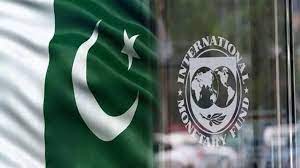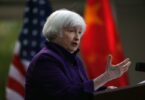Pakistan has reached a staff-level agreement with the International Monetary Fund (IMF) on the first review of a $3 billion bailout, which has paved the way for the release of $700 million after approval from the Executive Board of the Washington-based global lender. This important development has enabled Pakistan to access an additional $700 million, crucial for bridging inflow-outflow gaps and tracking its economic stability in the time ahead. According to the IMF, the agreement supports the Pakistani authorities’ commitment to advance the planned fiscal consolidation and accelerate cost-reducing reforms in the energy sector.
The state and the people of Pakistan have passed through dreadful moments in their history, as the unceasing turmoil and politically motivated policies of the past governments have pushed the country on the verge of a total disaster. Ranging from Tarin’s reckless economic policies to the unrealistic Dar’s dogma, the nation has witnessed severe economic volatility and mismanagement, skyrocketing inflation, unimaginable degradation of national currency along with the incapability of the Pakistani leadership that practically kneeled the nuclear-armed state in the recent past. Historically, the review talks and technical/ policy level appraisal of Pakistan’s current situation and future economic outlook was crucial through which the global lender had to ascertain whether the government was on track to meet benchmarks set under the $3 billion standby arrangement agreed in July. The IMF team held in-depth discussions with the Pakistani authorities on the implementation of the Standby Bailout Agreement (SBA) conditions. So far the IMF team okayed fiscal management and economic handling of the Pakistani rulers that will bring in total disbursement under the programme to almost $1.9 billion along with augmenting an improved economic rating that is crucial for the South Asian economy to garner economic support from the global donors to further consolidate its economic gains.
Realistically, the Pakistani interim rulers have relatively performed well as compared to their publicly mandated predecessors in the revival of the national economy as they owe less political agenda and indifferent appeasement of certain mafias and business cartels in the country. Over the past months, Pakistan has remained susceptible to significant external risks, including the intensification of geopolitical tensions, resurgent commodity prices, and the further tightening of global financial conditions.
The inflation has steadily declined and significant stability has been noticed in the prices of energy products which is essential for the advancement of the planned fiscal consolidation and acceleration of cost-reducing reforms in the energy sector. The government undertook painful economic reforms including hiking electricity and gas tariffs in line with the Lender’s conditions in a bid to avert the looming default risks through a short-term loan agreement with the IMF. As of now, Pakistan’s economic team must continue its efforts to build economic resilience and sustainability to envision a complete return to a market-determined exchange rate and pursue state-owned enterprise and governance reforms to attract investment and support job creation and social uplift programs.
There has been a significant economic recovery in recent months that needs to be preserved through stabilisation and consolidation policies to safely steer the nation out of prevailing crises. Pakistani economists must focus on policy priorities for balanced growth and macroeconomic sustainability along with continued fiscal consolidation to reduce public debt and sustain economic development/growth. There is a dire need to continue the current austerity drive, restrain unnecessary spending and improve revenue performance in the coming months to sustain these achievements and make further advancements in the economic field. So, this nation comes out of unceasing economic and monetary challenges once and for all.







